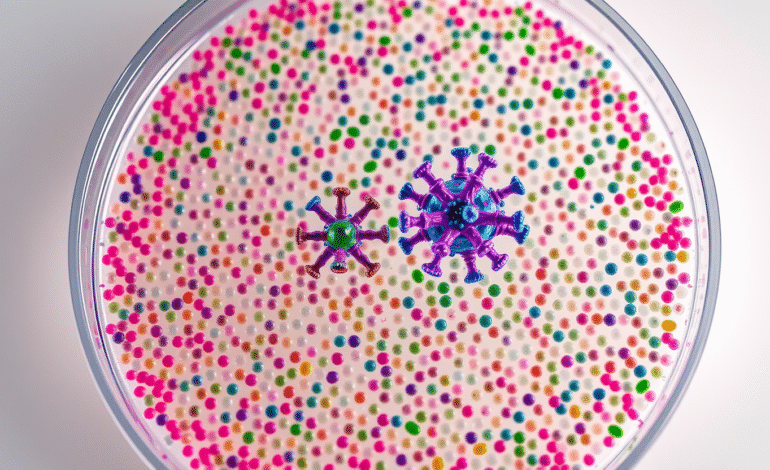AI Designs Novel Antibiotics to Combat Superbugs: Neisseria gonorrhoeae and MRSA

In a groundbreaking development, researchers at MIT have utilized artificial intelligence (AI) to create innovative antibiotics capable of combating two persistent infections: drug-resistant Neisseria gonorrhoeae and multi-drug-resistant Staphylococcus aureus (MRSA).
Employing generative AI algorithms, the research team generated over 36 million potential compounds and screened them computationally for antimicrobial properties. The top contenders discovered are structurally unique from existing antibiotics and function through novel mechanisms that disrupt bacterial cell membranes.
This strategy allows researchers to explore theoretical compounds never before seen, an approach they aim to use to identify and design compounds active against other bacteria species.
James Collins, the Termeer Professor of Medical Engineering and Science at MIT’s Institute for Medical Engineering and Science (IMES) and Department of Biological Engineering, expressed excitement about the project’s potential in antibiotics development. He stated that the work demonstrates AI’s power from a drug design perspective, providing access to vast, previously inaccessible chemical spaces.
The study, published in Cell, lists Aarti Krishnan, MIT postdoctoral researcher as the lead author, alongside Jacqueline Valeri PhD ’23 and Melis Anahtar ’08.
To expand their search beyond existing chemical libraries, researchers ventured into designing molecules based on specific chemical fragments that exhibited antimicrobial activity. They began by assembling a library of approximately 45 million known chemical fragments, subsequently screening the library using machine-learning models trained to predict antibacterial activity against N. gonorrhoeae.
The subsequent analysis led to nearly 4 million fragments. Removing any cytotoxic to human cells, displaying chemical liabilities, and resembling existing antibiotics left about 1 million candidates. The team identified a fragment, named F1, that exhibited promising activity against N. gonorrhoeae, using this fragment as the basis for generating additional compounds through two different generative AI algorithms.
Two AI algorithms, chemically reasonable mutations (CReM) and F-VAE (fragment-based variational autoencoder), were employed to produce about 7 million candidates containing F1. These candidates were computationally screened for activity against N. gonorrhoeae, yielding approximately 1,000 compounds.
Eighty of these compounds were synthesized, and one of them, named NG1, demonstrated impressive efficacy in killing N. gonorrhoeae in laboratory settings and mouse models of drug-resistant gonorrhea infection. Further investigation revealed that NG1 interacts with a protein called LptA, a novel drug target involved in the synthesis of the bacterial outer membrane, suggesting that the drug disrupts membrane synthesis, ultimately causing cell death.
In a separate study, researchers explored the potential of generative AI to freely design molecules as potential treatments for Gram-positive bacteria, such as S. aureus. They generated over 29 million compounds using CReM and VAE algorithms, with no constraints other than general rules governing chemically plausible molecule formation.
Six of the synthesized and tested molecules displayed strong antibacterial activity against multi-drug-resistant S. aureus grown in laboratory conditions. The top candidate, named DN1, was able to clear methicillin-resistant S. aureus (MRSA) skin infection in a mouse model. These molecules also appear to interfere with bacterial cell membranes but with broader effects not limited to interaction with one specific protein.
Phare Bio, a nonprofit collaborator on the Antibiotics-AI Project, is currently modifying NG1 and DN1 for further testing. Collins added that the team is looking forward to applying the developed platforms towards other bacterial pathogens of interest, such as Mycobacterium tuberculosis and Pseudomonas aeruginosa.
The research was funded in part by the U.S. Defense Threat Reduction Agency, the National Institutes of Health, the Audacious Project, Flu Lab, the Sea Grape Foundation, Rosamund Zander and Hansjorg Wyss for the Wyss Foundation, and an anonymous donor.






